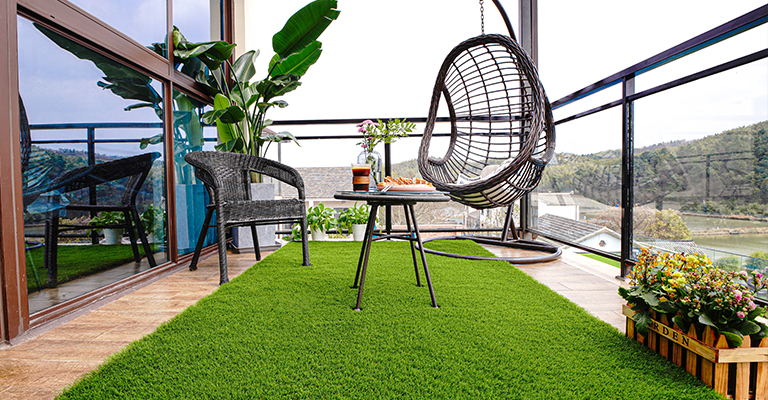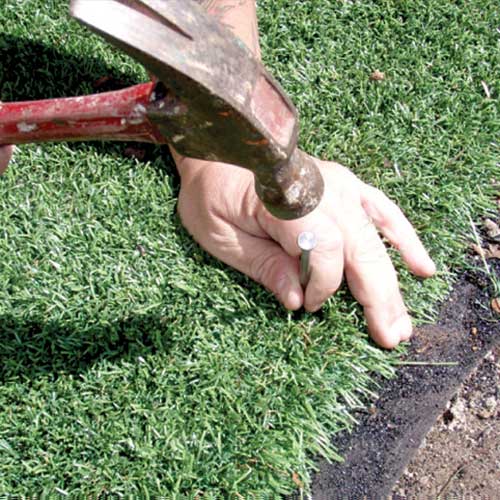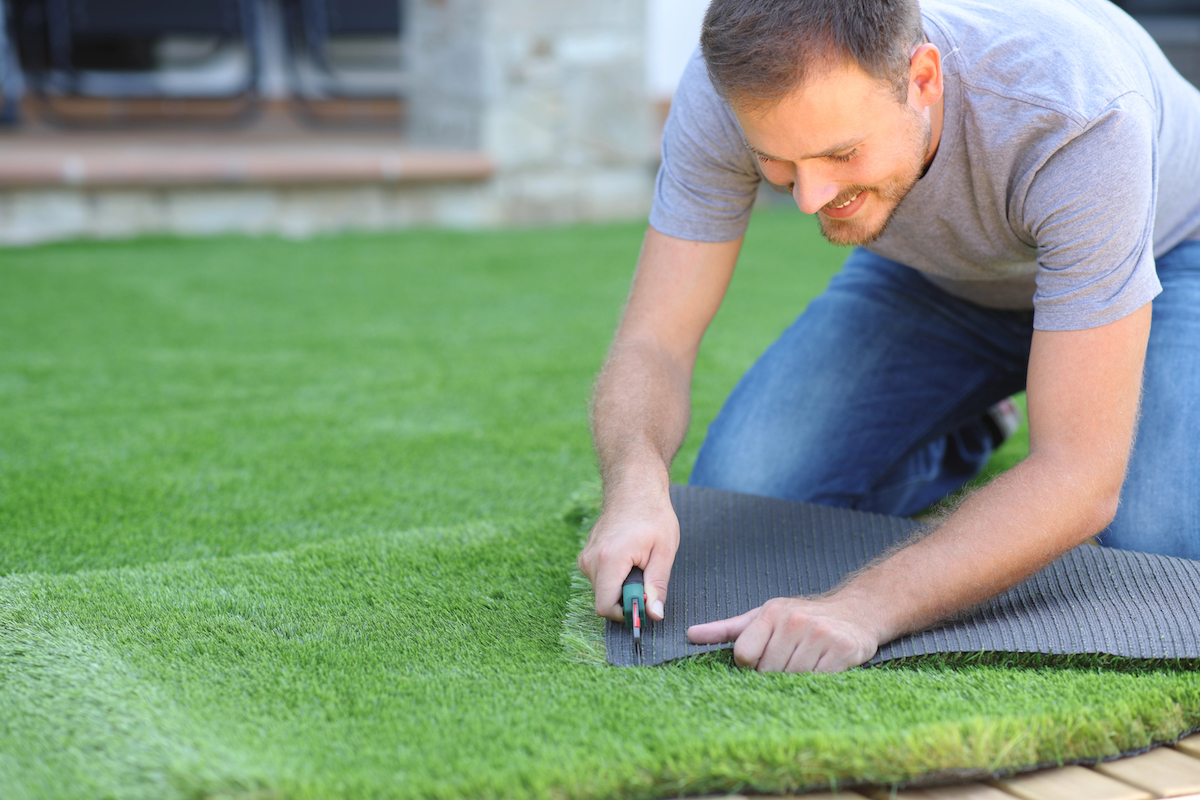Skilled Arizona Turf Installation Services for Residential and Business Use
Wiki Article
Delve Into the Environmental Benefits of Opting for Artificial Lawn Solutions
The fostering of synthetic grass remedies provides a compelling possibility to deal with pushing ecological challenges. By significantly lowering water usage and minimizing the application of unsafe chemicals, these options not only advertise sustainable landscape design but additionally safeguard neighborhood environments. Furthermore, the reduced carbon footprint related to reduced upkeep activities adds to a more lasting method to land monitoring. Nevertheless, the effects of these benefits expand past mere preservation initiatives, raising inquiries about their long-lasting influence on habitat preservation and general eco-friendly balance. Exploring these measurements reveals a complicated interaction worth considering.Water Conservation Advantages
One of the most significant advantages of artificial turf is its capacity to preserve water. In comparison, man-made lawn does not require watering, considerably reducing the general demand for water resources.By removing the requirement for regular watering, fabricated turf adds to lasting landscape practices and helps mitigate the environmental influence of extreme water usage. The conservation of water expands to the reduction of runoff, which can lead to soil disintegration and waterway air pollution.
In addition, the installation of man-made turf permits municipalities and property owners to allot water resources a lot more successfully, concentrating on crucial uses such as drinking water and agriculture. The shift in the direction of man-made lawn not just advertises accountable water use but also aligns with more comprehensive ecological objectives focused on maintaining natural deposits.
As neighborhoods increasingly prioritize sustainability, the water preservation advantages of synthetic grass provide an engaging case for its adoption in commercial and domestic landscaping tasks.
Reduced Chemical Usage
The shift to artificial lawn significantly decreases the dependence on chemical therapies typically utilized in natural lawn maintenance. Traditional grass management commonly involves the application of fertilizers, herbicides, and chemicals to advertise development and control parasites. These chemicals can present risks to human health, local wild animals, and the environment, adding to dirt and water contamination.In contrast, man-made turf gets rid of the demand for these damaging materials. By reducing the launch of synthetic compounds right into the community, man-made turf promotes much healthier soil and water systems.
Additionally, the absence of chemical overflow related to artificial grass installments helps secure neighborhood waterways from contamination, sustaining aquatic life and maintaining biodiversity. Arizona artificial turf. As areas increasingly prioritize lasting techniques, choosing synthetic grass offers a viable service that lines up with ecological conservation goals. Through this shift, homeowner can take pleasure in lavish environment-friendly spaces without compromising ecological health and wellness, leading the way for a much more lasting future
Reduced Carbon Impact

Moreover, the installment of synthetic grass can cause considerable water conservation. Natural lawns require considerable quantities of water for watering, which not only includes in the carbon footprint connected with water removal and therapy yet also pressures local water resources. In contrast, synthetic grass requires very little maintenance, requiring no watering, therefore substantially minimizing water use and its associated energy costs.
Additionally, the long life of synthetic grass adds to its decreased carbon impact. With a lifespan of approximately 15 years or more, the need for frequent substitutes is decreased, resulting in less waste and reduced energy usage in production and getting rid of traditional grass options. In general, synthetic grass offers a lasting alternative for ecologically aware landscape design.
Environment Conservation
Habitat preservation is a critical consideration in pop over here the argument over landscaping options, look at here now particularly when comparing artificial turf to natural yard. Natural yard yards typically require comprehensive upkeep, consisting of making use of fertilizers, herbicides, and pesticides, which can detrimentally influence neighborhood ecological communities. These chemicals can leach into the dirt and waterways, hurting indigenous vegetation and animals and interrupting neighborhood habitats.
Fabricated lawn removes the requirement for damaging chemicals, therefore safeguarding nearby wild animals and preserving the honesty of bordering communities. The installment of artificial turf can lead to the conversion of former lawn locations into more biodiverse landscapes, such as pollinator gardens or indigenous plant areas, which can support regional wild animals.
Inevitably, the shift to synthetic grass not only saves water and decreases upkeep initiatives yet also cultivates an extra unified connection in between human tasks and the native environment, advertising environment conservation at the same time.
Long-Term Sustainability
Lasting sustainability is a vital aspect in evaluating the advantages of synthetic grass over typical turf lawns. Among the most considerable benefits of synthetic turf is its toughness; it can last as much as 15-20 years with very little maintenance, whereas all-natural yard requires regular reseeding and substitute. This durability minimizes the need for constant resources, such as water, fertilizers, and chemicals, which are vital browse this site for keeping a healthy and balanced turf yard.In addition, synthetic grass adds to a reduction in carbon discharges connected with yard treatment devices. Traditional yards frequently require gas-powered lawn mowers, leaners, and blowers, every one of which add to air pollution. Arizona turf. In comparison, synthetic grass eliminates the requirement for such devices, advertising a cleaner environment
Moreover, the production of fabricated turf progressively makes use of recycled products, improving its sustainability profile. As manufacturers take on green methods, the environmental footprint of artificial lawn proceeds to decrease.

Verdict
The fostering of fabricated grass services provides considerable ecological benefits, including significant water preservation, minimized dependence on harmful chemicals, and a lower carbon footprint. Additionally, synthetic grass aids in preserving natural environments by lessening land disturbance and promoting long-term sustainability via the use of durable materials. Jointly, these variables underscore the capacity of synthetic grass to contribute favorably to ecological health and wellness and supply a sensible option to conventional landscaping practices in a significantly resource-conscious world.In contrast, artificial lawn does not require watering, dramatically decreasing the total demand for water resources. By lessening the launch of artificial substances into the environment, man-made grass promotes much healthier dirt and water systems.
In addition, the installment of man-made turf can result in considerable water preservation. In contrast, synthetic grass needs very little maintenance, needing no watering, thereby dramatically lowering water use and its linked energy costs.

Report this wiki page